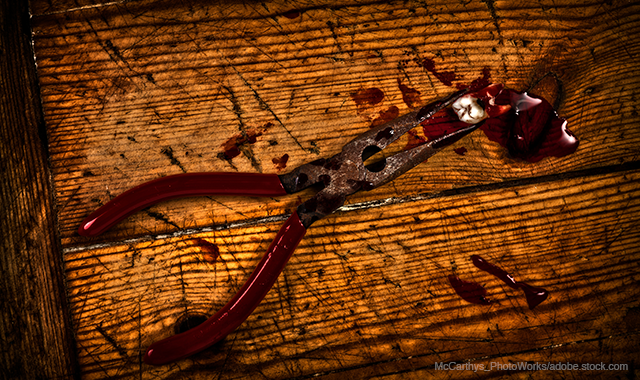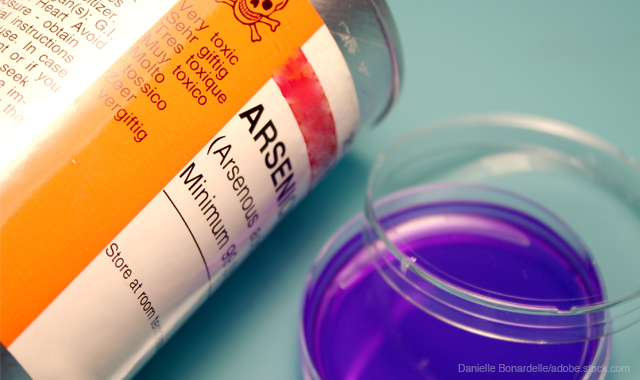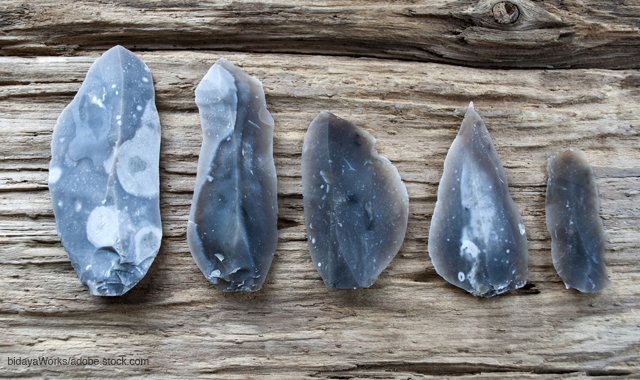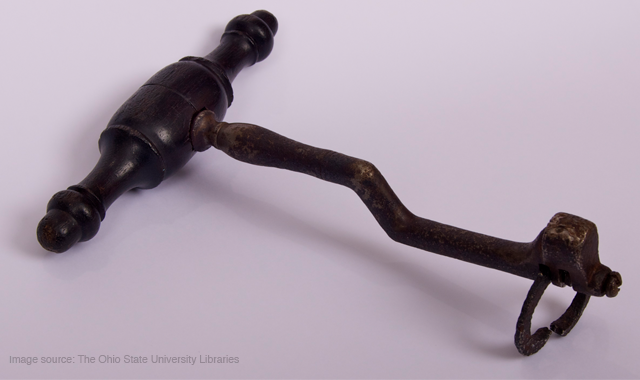7 horrifying procedures dentists used to do
If your patients think dental offices are scary now, show them what their ancestors had to endure.
Chances are, if it oozes or bleeds or causes pain, you’ve dealt with it in your practice. The stuff of horror films wouldn’t even faze most healthcare professionals.

But that’s because you’re used to treating those things. You know how to relieve the pain of caries, how to staunch bleeding and use antibacterial agents. For much of dental history, however, that hasn’t really been the case. In fact, it almost seems like dentists of old caused more pain and more bleeding than they stopped.
If you’ve ever had a patient who’s scared to sit in your chair, just remind them that it could be a lot worse. You could be putting poison in their mouth, or using dental tools with the unfortunate side effect of accidentally breaking entire jaws, or drilling into their mouth with sharp rocks. The whine of the dental drill isn't exactly a pleasant sound, but it's certainly much easier to handle with copious amounts of anesthetic.
To help celebrate just how far dentistry has come, from the earliest evidences of dentistry around 14,000 years ago to the hi-tech landscape of today, and to celebrate the scarier side of this time of year, we rounded up some of the most horrifying things dentists have ever done.

The key of scream
The Middle Ages and Renaissance in Europe created the ultimate jack-of-all-healthcare-trades with the curiously-named “barber-surgeon.” These healthcare workers could perform a range of tasks, from cutting hair to bloodletting to cupping therapy to amputating limbs to, you guessed it, dentistry.
These barber-surgeons are ones responsible for the quintessential Middle Age dental technique - large tongs grabbing a tooth and wrenching it free.
But tongs weren’t the only tools available to these early dentists. One tool, known as the “pelican” because it resembles a pelican’s beak, dates back to the 1300s. The device operated using a fulcrum system, where a curved metal bit was placed under the tooth and then a lever removed the tooth. The system was painful and probably caused a fair amount to damage.
It didn’t get much better after the Middle Ages. From the late 1700s on, the most common tool used for tooth pulling was the dreaded “dental key.” The dental key, also known as a tooth key, was modeled after a door key. It was inserted horizontally, then clamped over the tooth ready to be pulled. The dentist would then rotate the key, loosening the tooth. This sometimes caused horrific injuries to the jaw or even took out adjacent teeth. Untrained practitioners could even break whole jaws during extraction. Dental keys remained in vogue until the early 20th century, when modern forceps were finally invented.
Photo credit: Tooth Key, The Ohio State University Libraries.



Strong water
While the common perception of the Medieval dentist is gruesome, are they really so different from the dentists of today? After all, tooth pulling still happens with some degree of frequency (though at least with much more anesthesia and cleaner instruments)?
Even more impressively, dentists of the time were also involved with cosmetic procedures. Specifically, some barber surgeons were in the business of teeth whitening. Perhaps they weren’t so different from dentists today!
That would be true, except that the teeth whitening agents of the 16th century were a little cruder. To achieve that sparkly-white hue, barber surgeons applied the very innocent-sounding aqua fortis (strong water) using a stick. This was done, of course, after a thorough cleaning using toothpicks and bits of cloth. All of this sounds very similar to today, except when you realize that aqua fortis is actually just a solution of nitric acid. While it certainly did whiten teeth, it also had the unfortunate effect of ruining the enamel beyond repair.



Arsenic and white teeth
Arsenic has a long and storied history in the dental field.
The idea probably originated in China about 3000 years ago. At the time, China had what were probably the most advanced dental care techniques in the world. They were already using fillings, practicing restorations with artificial teeth and treating periodontitis using teeth-cleaning techniques. So while putting an extremely toxic substance into the oral cavity may not have been the best idea, there were plenty of other techniques that were likely much more successful (and less deadly).
Arsenic in dentistry, however, was by no means limited to China. Around 700 AD, dentists in Europe and the Middle East used arsenic to treat dental fistula and tooth pain, and for root canals. They also mixed it with opium as a pain-reliever.
The practice was still going strong over a 1000 years later - in fact, the practice was still going strong in dentistry circles through the 1800s. An October 8, 1879 New York Times article describes “the horrible death of Mr. George Arthur Gardiner, caused by arsenical poison placed by a dentist in one of his teeth to kill an aching nerve.”
Today, the practice is generally frowned upon - though some homeopaths still recommend arsenic as a way to relieve tooth pain and there are still arsenic poisoning cases reported because of it.



Super sponges
Depending on who you ask, this one might not even be so bad.
As early as the 9th century, surgeons would sometimes use a device they referred to as a “soporific sponge” as an anesthetic. It was used by patients as a deterrent the excruciating pain they might have otherwise undergone. Doesn’t sound so bad, right?
The only problem was the ingredient list for the sponge. The recipe begins with a sea sponge, which is then soaked in a solution of ingredients like opium, hyoscyamine (an overdose of which can cause hallucinations and short-term memory loss), hemlock and mandrake. The sponge was then supposed to completely dry out in the sun, and then would be dunked in water again just before surgery.
Some accounts say that surgeons would lift the sponge to patient’s nostrils, but other say the sponge water would be drunk. Whatever the method, the patient would fall asleep or hallucinate. This doesn’t mean they weren’t in pain, however - even if they couldn’t remember it, they would still flinch and move about in reaction to pain.


Pain-tertainment
While some early dentists used less-than-savory chemicals and salves to treat dental pain, some resorted to more strange devices.
Travelling dentists of the 18th century would roam through villages and towns, advertising their shows in town squares and other public places. They were known simply as “tooth drawers,” and made a spectacle out of their craft. They were known for one type of dental surgery: pulling teeth.
Tooth drawers would set up a lavishly-decorated stage and hire musicians to draw in spectators (definitely a HIPAA violation). They would then invite patients suffering from toothaches up on the stage, promising that they were expert surgeons who could perform the operation painlessly. Not surprisingly, most of them were not very skilled.
But crafty tooth drawers could use tricks to lure more innocent patients to their stage. The musicians not only drew a crowd to the stage, but they drowned out the patient’s screaming on stage.
Another trick was to plant an actor in the audience. That actor would then come on stage, where the surgeon would mimic pulling a tooth - but would instead place a blood-soaked tooth in the actor’s mouth. At the end what looked like a very quick and pain-free experience, the plant would then spit out the tooth for the amazed crowd.



Neolithic drilling
You might think of ancient humans as all having rotted out, decaying teeth. After all, they all went way longer than six months without a cleaning!
But in reality, only a very small number of them actually had problems. In fact, hunter gatherers had a caries frequency rate of just 1 to 5 percent. With no refined sugar to speak of in their diets, our ancient ancestors were much healthier (at least in terms of caries) than us.
Still, not even those unlucky few had to suffer with rotten teeth for their entire lives. Researchers recently found evidence of dental care in humans as far back as 14,000 years ago - painful, painful dentistry. Researchers discovered carious lesions on a molar found at a site in Northern Italy. Remarkably, those lesions showed evidence of scratches from pointed flint tools, sort of an early proto-drilling. If your patients ever complain about the whine of a drill, remind them that you could be using a hammer and chisel without the use of anesthetic.
The second-oldest evidence of dentistry ever found was even more advanced than that. Researchers discovered teeth dating back to around 13,000 years ago. The teeth were again drilled, but also had a much more modern touch - fillings made of bitumen (a kind of naturally-occurring tar) and human hair. The filling may have been used as a kind of antiseptic, but that doesn’t negate the fact that the poor patient had to endure primitive stone tools scraping away tissue only to have tar shoved into the wound.



Poison in the wound
Colocynth (a gourd-like vine native to the Mediterranean region) is used in a variety of homeopathic treatments, but it’s been banned by the FDA since 1991. It can cause severe irritation of the stomach and bloody diarrhea, kidney damage and even death.
That didn’t stop ancient Egyptians from shoving it into teeth in an attempt to heal teeth. The process for treating a septic tooth, or what they called “a tooth that gnaws into an opening in the flesh,” was a salve containing cumin, frankincense and colocynth.
This salve would most certainly have smelled good and probably even tasted good - not to mention the antibacterial and pain-relieving properties some ascribe to frankincense. But all of those good antibacterial properties would be wasted if the patient’s kidneys failed.


